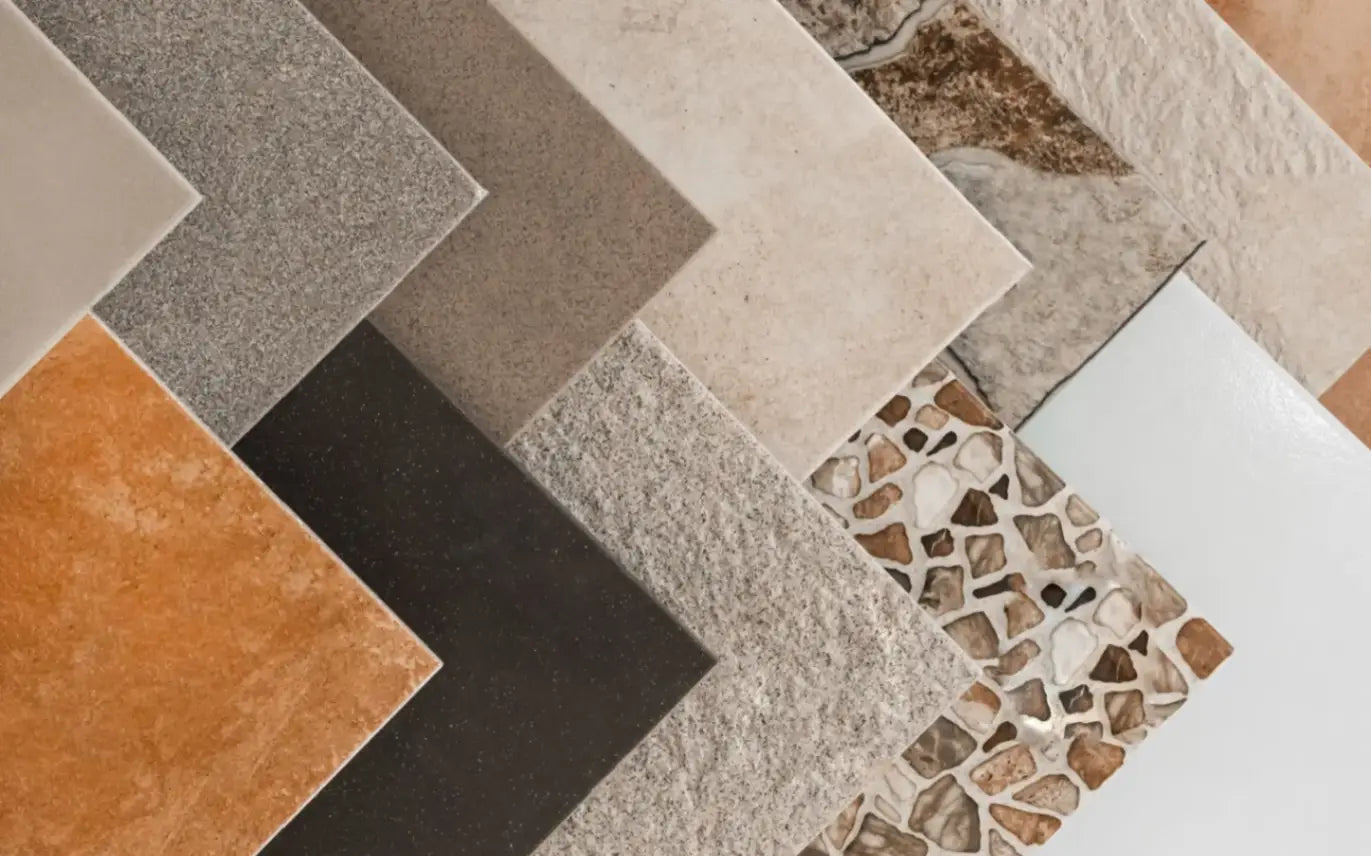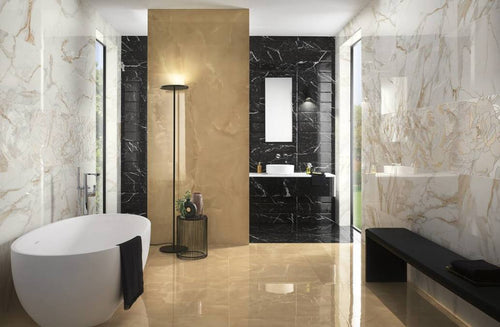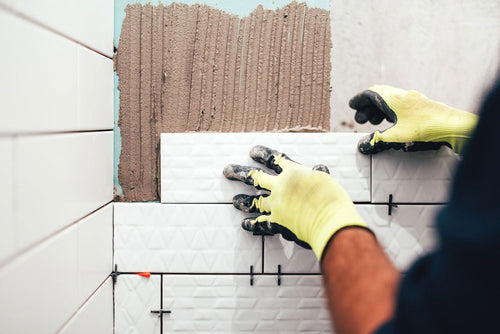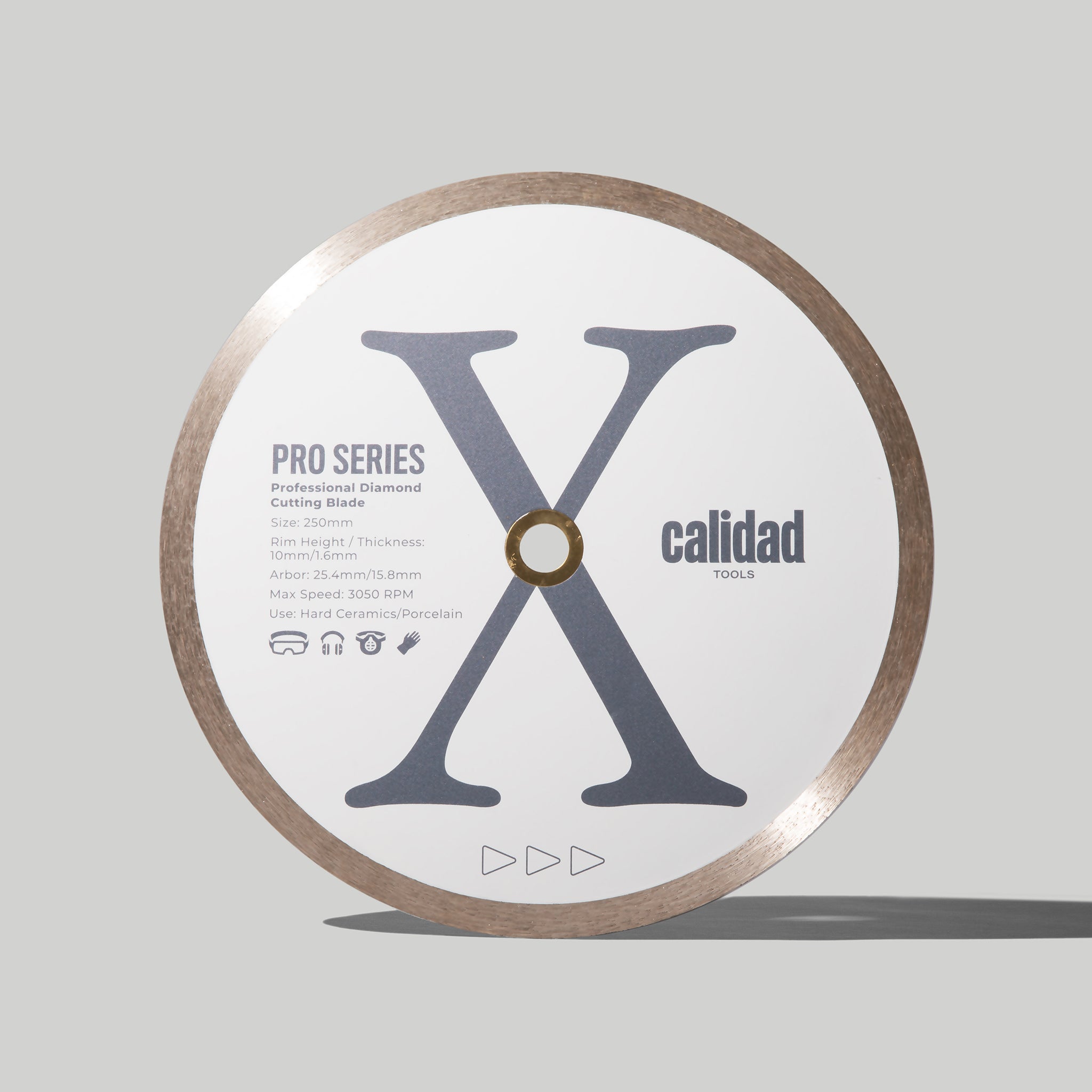Everything You Need To Know About Ceramic Tile

Are you getting tired of looking at your bland old walls and floors? Do you want to breathe new life into your home and raise its value in the process? Well, maybe the ceramic tile is the answer to your troubles!
Ceramic tiles have always been popular, but they haven't been very affordable. That is, until the last decade. The tile industry experienced a boom in the past two decades. And thanks to tons of innovations in the manufacturing process, ceramic tile has never been cheaper.
Installing tile in your home isn't just a great way to freshen up your home, it's also a pretty affordable way of increasing its value. In this article, I'll go over everything you need to know about ceramic tiles - from the basic stuff, such as what they're made of, to more advanced topics, such as how to install and maintain them.
What Is A Ceramic Tile?
Ceramic tiles, rectangular in shape, serve as versatile coverings for walls, floors, and edges within homes and commercial spaces. Crafted from a blend of quartz, sand, talc, and other natural components mixed with water, these tiles offer both durability and aesthetic appeal.
Glazed ceramic tiles are commonly found in residential areas, commercial establishments, and office spaces. One of their key advantages is their ease of maintenance, as their surfaces are easily cleaned, making them a practical choice for various applications.

How Are Ceramic Floor Tiles Made?
The production process of ceramic tiles involves several steps aimed at achieving both durability and functionality. It begins with the combination of quartz, sand, talc, and other natural components, along with water, to form a clay-like mixture.
This mixture is then molded into the desired shape and size, followed by drying to remove excess moisture. Next, the tiles are fired in kilns at high temperatures to strengthen their structure and enhance their durability.
Glazing may also be applied to the surface to improve functionality by increasing resistance to stains, water, and scratches.
Finally, the tiles undergo quality checks before being packaged and distributed for use in various residential, commercial, and industrial settings.
Ceramic Vs Porcelain Tiles
For those contemplating tile installation at home, the choice between Ceramic Tiles and Porcelain Tiles often prompts deliberation. Indeed, distinctions exist between the two.
Ceramic tiles, characterized by lower density, offer a softer surface, while porcelain tiles boast greater density and hardness. Ceramic tiles exhibit higher water absorption rates than porcelain counterparts. They excel in intricate designs.
Porcelain tile flooring, conversely, resists cracking, contrasting with ceramic tiles' susceptibility, especially in colder climates. While porcelain tiles tend to be pricier, they endure heavy foot traffic adeptly, making them preferable for high-traffic areas.
Additionally, porcelain tiles demonstrate superior resistance to moisture compared to ceramic options.
Pros Of Laying Ceramic Tiles

Let's now consider the benefits derived from ceramic tiles. Before opting for ceramic tiles for walls and floors, it's crucial to examine their advantages.
- Ceramic tiles are versatile, making them suitable for kitchens and bathrooms, effectively withstanding moist conditions in wet rooms.
- Their durability is a notable feature.
- They alleviate concerns about allergies.
- With proper cleaning, you can maintain the shine and glow of these versatile tiles.
Cons Of Laying Ceramic Tiles
Just as there are advantages, there are also drawbacks to consider. What are these potential disadvantages that may cause inconvenience? Here's what you should be aware of:
- Ceramic floors can sometimes feel excessively hard.
- You may experience discomfort when walking or standing on the floor after cleaning.
- Issues may arise with padded underlayment.
- The weight of these tiles can pose challenges during installation on floors.
- Additionally, ceramic tiles are susceptible to cracking, so it's wise to have extra tiles on hand in case replacements are needed.
What To Consider When Shopping For Ceramic Tiles

Choosing the right ceramic tiles is a pivotal decision that can significantly impact the aesthetics and functionality of your space. Whether you're looking to elevate the ambiance of your dining area or create a cozy atmosphere in your living space, ceramic tiles offer remarkable versatility to suit various design preferences and functional needs.
Before diving into the installation process, it's essential to meticulously plan your layout to ensure optimal placement and visual appeal. This involves creating a detailed floor plan that takes into account the dimensions and layout of the area where the tiles will be installed.
Seeking professional assistance for precise measurements can help avoid costly errors and ensure a seamless installation process. Working with a knowledgeable tile professional is invaluable in assessing the condition of your floors and walls before installation.
Addressing any existing damage or imperfections beforehand can prevent future issues and ensure a flawless finish. When selecting ceramic tiles, pay close attention to details such as color, pattern, and size to achieve the desired aesthetic outcome.
Whether you prefer bold and vibrant hues or subtle, neutral tones, choosing the right color palette can enhance the overall look and feel of your space. Additionally, selecting the appropriate tile size can help create visual interest and balance within the room.
By carefully considering these factors and seeking expert guidance, you can confidently select and install ceramic tiles that not only elevate the beauty of your space but also enhance its functionality and durability for years to come.

Are There Different Types Of Ceramic Tiles?
When sprucing up the interior ambiance of your home, it's crucial to explore the myriad designs and patterns of ceramic tiles. Variety adds the necessary spice to enrich the colors and flavors of your living space.
The right tile selection can significantly influence the overall atmosphere of your home. Let's delve into the specifics of some essential variants:
- Glazed Ceramic Tiles - Glazed ceramic tiles boast a pristine and protective coating, ensuring both elegance and safeguarding. While these tiles may exhibit a slight slickness, they provide peace of mind with their protective qualities.
- Unglazed Ceramic Tiles - Homeowners gravitate towards unglazed ceramic tiles for their enhanced safety features, including superior stain resistance and robust slip resistance. These tiles are ideal for high-traffic areas, offering durability and reliability.
- Ceramic Wall Tiles - Suitable for both indoor and outdoor applications, ceramic wall tiles elevate the texture of walls with their glazed or unglazed options. They add a touch of glamour to any space, enhancing its visual appeal.
- Ceramic Floor Tiles - Ceramic floor tiles are an excellent choice for flooring in homes and offices, offering versatility and functionality. Their durability and aesthetic appeal make them a popular option for practical tiling solutions.
Are There Different Finishes Of Ceramic Tiles?

Let's now delve into the top finishes to consider when investing in ceramic tiles.
- Glossy - Glossy ceramic tiles radiate sophistication, making them ideal for creating stunning flooring that resists scratches and stains. Perfect for both commercial and residential spaces, they offer a sleek facelift.
- High Glossy - High glossy ceramic tiles are versatile options suitable for both small and large areas. Their long-lasting shine adds enduring elegance to any space.
- Matt - Matt ceramic tiles are renowned for their attractive finishes and captivating designs, comparable to vitrified tiles. These tiles are resistant to smudges, stains, and moisture, ensuring a pristine appearance.
- Polished - Polished ceramic tiles exude timeless elegance, serving as viable alternatives to glazed tiles. However, careful handling is essential to prevent abrasions on the flooring.
- Satin - Satin ceramic tiles epitomize refined finish and smooth surfaces, making them effortless to clean and maintain. These tiles elevate the aesthetic appeal of any space with their superior quality.
- Rustic - Rustic ceramic tiles are coveted for their innate charm and unique patterns, making them a popular choice worldwide. Ideal for adding character to any home, these tiles offer endless design possibilities.
- Book Match - Bookmatch ceramic tiles provide a tailored solution for flooring, ensuring a superior first impression. Selecting the perfect tiles is crucial to create visually striking spaces that captivate attention.
- Carving - Carving ceramic tiles exude individuality and versatility, offering endless design options for various home applications. These tiles add a touch of elegance to any space, enhancing its aesthetic appeal.
- Glint - Glint ceramic tiles serve as exquisite adornments for homes, revitalizing interior ambiance with their quality craftsmanship. Opt for standard sizes to achieve a cohesive and polished look.
- Silk - Silk ceramic tiles boast a wide assortment, perfect for enhancing the style of residential and commercial spaces. Elevate your surroundings with these stylish tiles that exude sophistication.
- Metallic - Metallic ceramic tiles add a scintillating touch to any space, offering a unique and surreal aesthetic. Choose from soft silver, bronze, copper, and other metallic hues to infuse personality into your interiors.
- Wooden - Wood look ceramic tiles bring sophistication and glamor to your home, mimicking the appearance of real wood with unmatched durability and versatility.

What Colors Do Ceramic Tiles Come In?
Ceramic tiles are available in a wide variety of colors, including:
- White - White tiles are ideal for both walls and floors, although extra care is needed to maintain their radiant appearance.
- Black - Make a striking impression with black ceramic tiles, adding a touch of class and drama to your space.
- Gray - Gray ceramic tiles are a versatile choice for various flooring needs, providing a professional and sophisticated look.
- Red - Inject a regal feel into your walls and floors with red ceramic tiles, offering a bold and vibrant aesthetic.
- Blue - Create a surreal impact with blue ceramic tiles, featuring graceful patterns that elevate the ambiance of any room.
- Brown - Durable and reliable, brown ceramic tiles are perfect for commercial spaces, offering both functionality and style.
- Beige - Enhance your living rooms, bathrooms, and kitchens with the versatile adornment of beige ceramic tiles.
- Green - Achieve seamless transitions within your home with green ceramic tiles, suitable for spaces of all sizes.
- Yellow - Opt for yellow ceramic tiles with bold designs and textures, ensuring a vibrant and dynamic atmosphere.
- Pink - Consider pink ceramic tiles as a versatile solution appreciated by discerning enthusiasts in the tiling industry.
Are There Different Sizes Of Ceramic Tiles?
When properly sized, ceramic tiles can create a striking impression, offering versatility in both size and shape options.
Common sizes include:
- 45*90 cm
- 90*90 cm
- 30*120 cm
- 60*90 cm
- 20*120 cm
What's The Best Place To Lay Ceramic Tiles In?

The application method of these tiles can significantly impact a home improvement project, allowing for creative approaches to impress:
- Kitchen - Ceramic tiles in the kitchen can transform its appearance, breathing new life into the space.
- Bathroom - Renovate your bathroom with waterproof ceramic tiles for both practicality and aesthetics.
- Living Room - Choose ceramic tiles for the living room to enhance its ambiance and durability.
- Outdoor Space - Outdoor ceramic tiles can elevate the look of your patio while ensuring safety with anti-slip properties.
- Hallway - Creative ceramic tile solutions can beautify your hallway, creating a cohesive look throughout.
- Bedroom - Revitalize your bedroom with ceramic tiles on walls and floors, creating a stunning personal retreat.
- Office - Cozy up your office space with ceramic tiles, adding warmth and style to the environment.
- Restaurant - Modern ceramic tiles can transform your restaurant, enhancing its appeal and ambiance for a memorable dining experience.
How To Install Ceramic Tiles

Installing ceramic tile requires careful planning and execution to ensure a successful outcome. Here's a brief guide to help you get started:
- Prepare the Surface - Ensure that the surface where you'll be installing the ceramic tile is clean, dry, and smooth. Remove any debris, dirt, or existing flooring materials. If necessary, use a leveling compound to even out uneven areas.
- Plan Your Layout - Before you begin laying the tile, plan the layout to ensure a visually appealing result. Start by marking the center of the room and dry laying tiles along the center lines to see how they fit. Adjust as needed to avoid small cuts at the edges.
- Mix the Thinset - Prepare the thinset mortar according to the manufacturer's instructions. Use a drill with a mixing paddle attachment to achieve a smooth consistency.
- Apply the Thinset - Using a notched trowel, spread the thinset evenly over a small section of the floor. Hold the trowel at a 45-degree angle and comb the thinset in one direction. Avoid spreading too much thinset at once to prevent it from drying out before you can lay the tiles. If you want to make sure the thinset spread is
- Lay the Tiles - Press each tile firmly into the thinset mortar, twisting slightly to ensure a good bond. Use tile spacers to maintain consistent grout lines between tiles. Continue laying tiles in sections, working outward from the center.
- Cut Tiles as Needed - Use a tile cutter or wet saw to cut tiles to fit around obstacles or along edges. Measure carefully and make precise cuts to achieve a professional-looking result. For an even more precise and efficient cutting experience, I recommend you try our "Durty Kurt" Turbo Mesh Cutting & Shaping Disc. This revolutionary solution tackles the most challenging cutting tasks with ease, offering chip-free cutting and the ability to perform both straight and curved cuts.
- Allow to Set - Allow the thinset to cure for the time specified by the manufacturer before grouting. This typically takes 24 to 48 hours.
- Grout the Tiles - Once the thinset has set, mix the grout according to the manufacturer's instructions. Use a grout float to press the grout into the joints between the tiles at a 45-degree angle.
- Clean Up - After the grout has set for about 15 to 30 minutes, wipe off excess grout with a damp sponge. Rinse the sponge frequently and continue wiping until the tiles are clean.
- Seal the Grout - Once the grout has fully cured, apply a grout sealer to protect it from stains and moisture. Follow the manufacturer's instructions for application and drying times.
By following these steps carefully, you can achieve a beautiful and durable ceramic tile installation in your space.
How To Clean And Maintain Ceramic Tile

Maintaining ceramic tile is essential to preserve its appearance and longevity.
Here's a brief guide on how to keep your ceramic tile looking its best:
- Regular Cleaning - Sweep or vacuum the tile surface regularly to remove dirt and debris. For deeper cleaning, mop with a mild detergent and warm water solution.
- Avoid Harsh Cleaners - Avoid using abrasive cleaners or harsh chemicals that can damage the tile's surface or grout. Stick to pH-neutral cleaners to ensure gentle yet effective cleaning.
- Grout Care - Keep grout lines clean by scrubbing with a grout brush and mild cleaner. Consider sealing grout periodically to prevent staining and moisture penetration.
- Preventative Measures - Use mats or rugs in high-traffic areas to reduce wear and tear on the tile surface. Promptly wipe up spills to prevent staining.
- Avoid Impact - Be cautious when moving heavy furniture or objects across ceramic tile floors to prevent chipping or cracking.
By following these maintenance tips, you can ensure that your ceramic tile remains beautiful and functional for years to come.
Conclusion
Ceramic tiles offer a versatile and affordable solution for enhancing the aesthetics and functionality of your space. With a wide assortment of colors, finishes, and sizes available, you can easily find the perfect tiles for your project.
Whether you're renovating your kitchen, bathroom, living room, or outdoor space, ceramic tiles provide durability and style. For quality ceramic tiles and a range of angle grinder saws, visit our shop. Elevate your home with ceramic tiles today!












